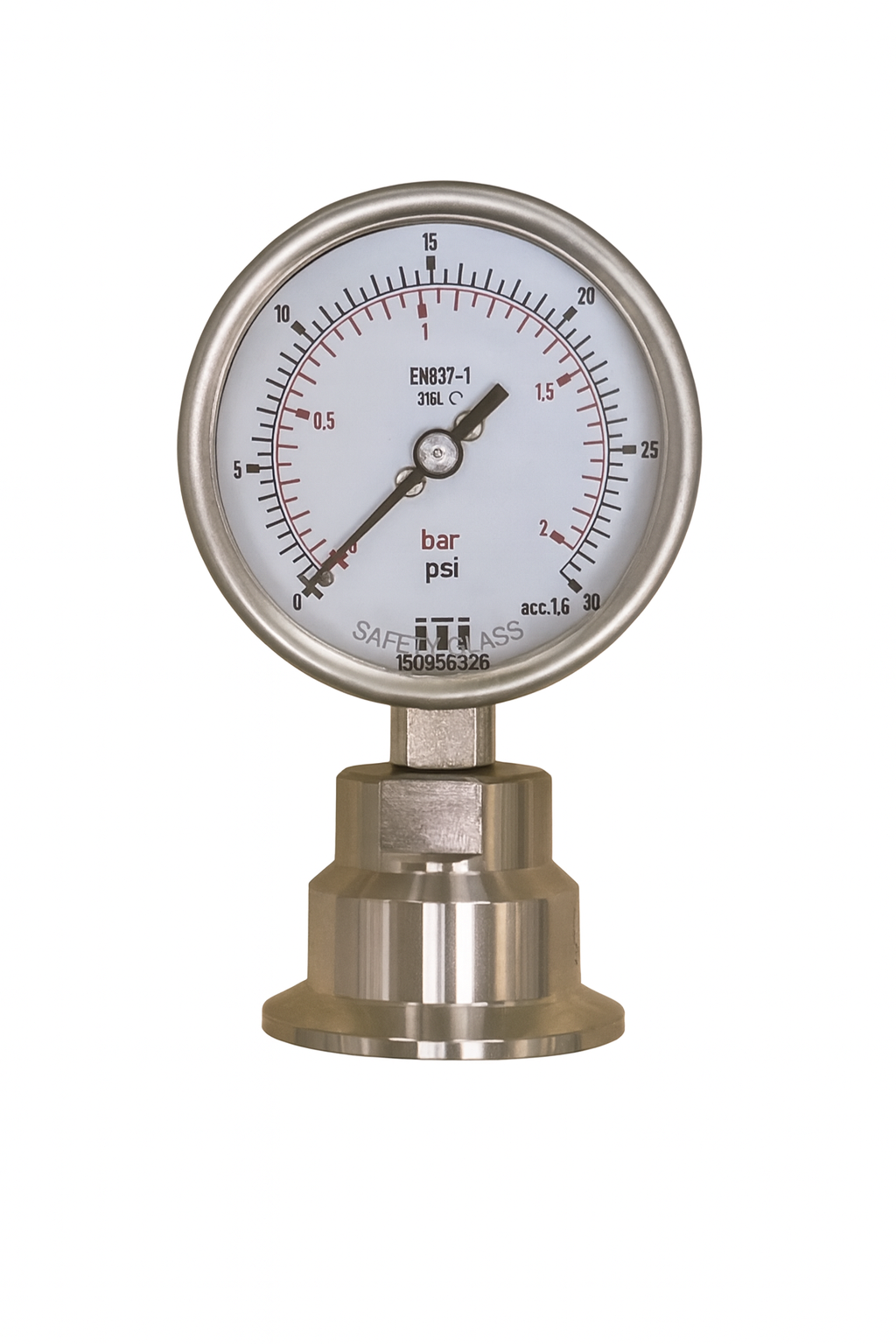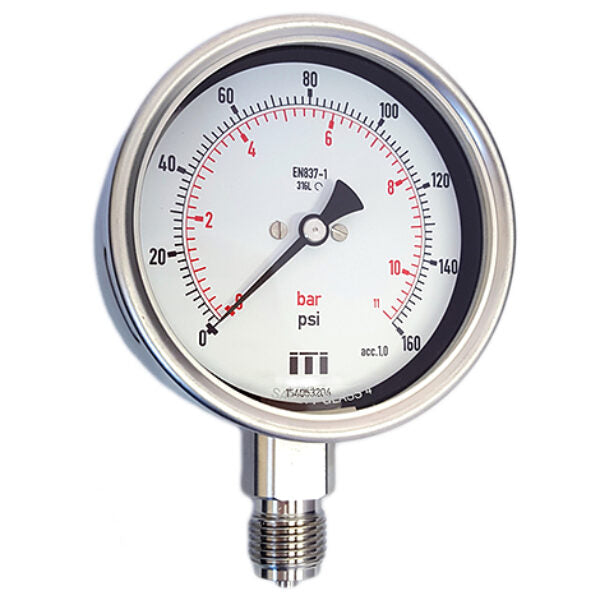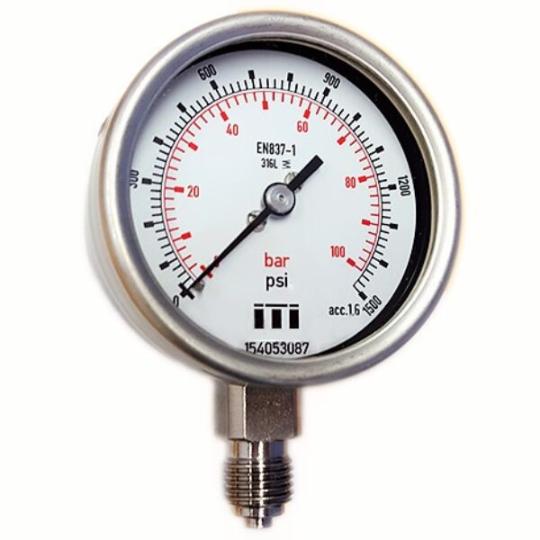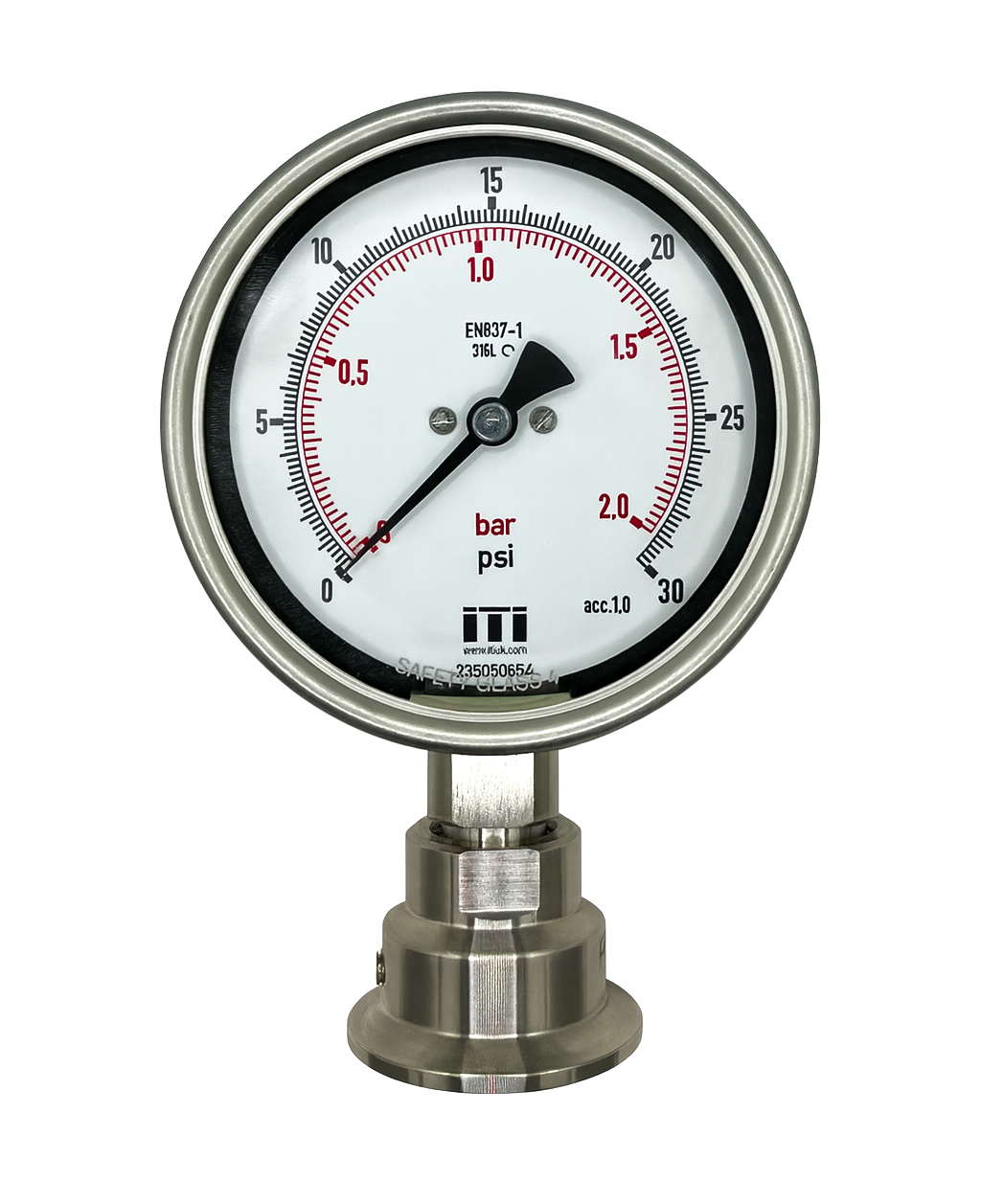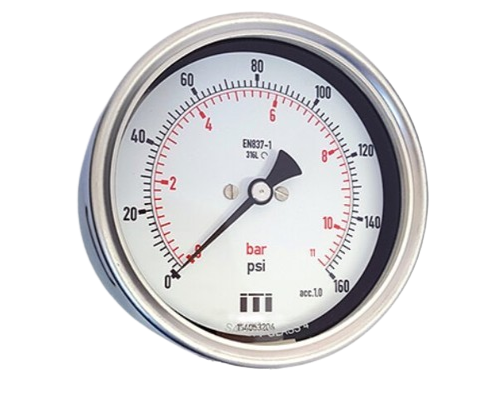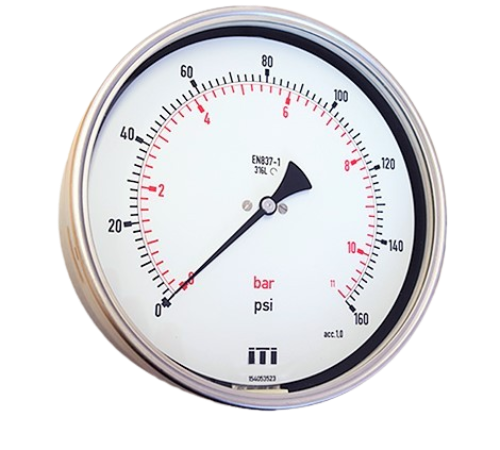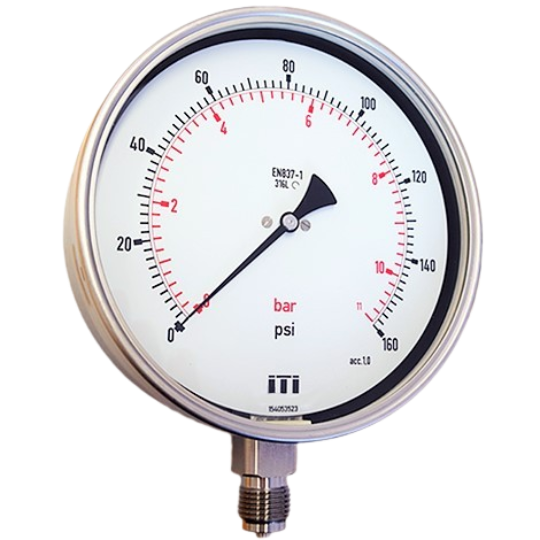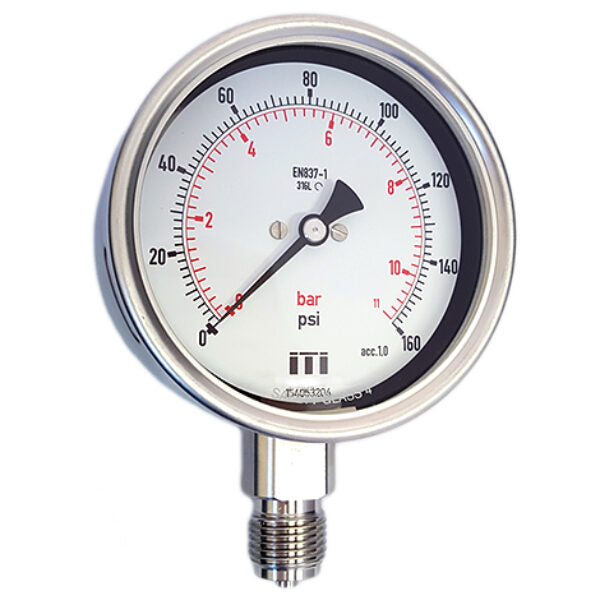At Sterling ITI, we specialise in manufacturing and supplying high-quality stainless steel process pressure gauges designed for performance in the toughest industrial environments. Every gauge is built with a rugged 304 stainless steel case and 316 stainless steel wetted parts, ensuring long-lasting accuracy, corrosion resistance, and reliability even in demanding applications such as chemical processing, oil and gas, water treatment, and manufacturing.
Our industrial pressure gauges are available in a complete range of dial sizes from 40mm to 160mm, allowing you to choose the perfect fit for your system’s requirements. Whether you need compact gauges for tight installations or large dials for easy readability, we deliver exactly what you need - quickly and without compromis
